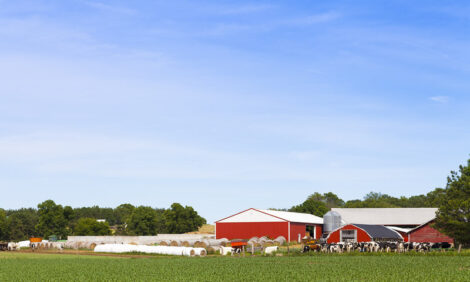



Sand-laden Manure Handling Options
Sand bedding is very popular with many dairy producers until it comes to handling sand-laden manure. While sand is very comfortable for cows to lie on in well designed and managed freestalls, sand-laden manure is difficult to handle and abrasive to concrete and manure handling equipment including skid steer loaders, pumps and manure spreaders.Dairy producers planning to use sand bedding can consider several options for handling sand-laden manure. Owners and managers need to consider how this specific sand-laden manure handling system fits into their overall bedding and manure handling system, with environmental regulations, and with odour concerns they may have on the dairy farm.
The system must be economical to build and operate. Dairy producers need to plan for handling manure in very cold weather when it can freeze in freestall barns and storage units.
Manure handling systems include collection from manure alleys and holding areas, transport to treatment and/or storage, manure storage and land application to recycle the manure nutrients. Sand systems may include sand-manure separation so that some sand can be reused for bedding.
A skid loader with a half-tire blade is a very common method for collecting sand-laden manure from freestall alleys. Alleys are scraped while the cows are being milked. The skid loaders can push the sand-laden manure directly into a concrete lined storage or into a manure transfer line that goes either to storage or treatment. Sand-laden manure can also be collected and transported with vacuum tankers. In milder climates, manure can be collected in barns with specially sloped alleys by flushing the alleys with recycled wastewater.
Sand-laden manure can be transported from the barn using scrapers, augers, flush flumes, pumps or gravity flow. Gravity flow systems require sufficient drop (at least 10 feet of height difference) between the barn and the storage to work well. Scrapers, augers and pumps need to be designed to handle sand-laden manure and the abrasion it causes on moving parts and bearings. Most transport methods cannot handle frozen manure.
1995 Michigan State University Extension Bulletin described practices for removing stored sand-laden dairy manure for land application. One method skimmed off liquids and removed the remaining sand-laden manure with a skid or front end loader. This method required both liquid and solid manure handling equipment. Other methods agitated the sand-laden manure and pumped it out of the storage for land application. Sometimes extra water was added when the sand-laden manure was too thick to agitate. If agitation was successful, only liquid manure handling equipment was needed.
Since the mid 90’s other options for handling sand-laden manure have been developed including weeping walls, mechanical separators and sand lanes. Dairy producers using mechanical separators or sand lanes can reuse the separated sand for bedding.
Weeping wall is a general term for different types of manure structures with porous walls, panels or screened outlets that allow wastewater and urine to weep or seep out of the sand-laden manure. The liquids drain into a lined storage until land applied. The drained sand-laden manure is handled as a solid during removal and land application. The liquid fraction can be applied with irrigation equipment, tow-hose or tanker wagon. Weeping wall systems do not reuse sand.
Dairy producers interested in recycling sand have two options, mechanical sand separators or sand lanes. Both systems use recycled wastewater. More sand is recovered when a coarse sand is used. Very fine sand (sugar sand) does not separate easily from sand-laden manure.
Mechanical separators are typically able to recover 80 to 95 per cent of the sand. Sand-laden manure is brought to the separator, mixed with recycled wastewater and agitated. The sand separates and settles to the bottom of the separator then is removed. Fresh water is used to remove fine organic matter and clean the sand. The sand is moved to a place where it is stacked and allowed to dry before being reused as bedding. Mechanical sand separators require adding clean water, which increases the wastewater storage volume required and land application costs.
Sand lanes are long gently sloping shallow concrete lanes where sand-laden manure and flush wastewater spread out and the sand settles out along the lane. A skid loader is used to remove the settled sand from the sand lane. The wet sand is piled into stacks to drain multiple times and allowed to dry before being reused for bedding. Wastewater used to flush the manure transport flume receiving sand-laden manure scraped from the manure alleys to the top of the sand lane can come from either the manure storage or from a manure separation basin at the bottom of the sand lane after much of the manure is removed.



